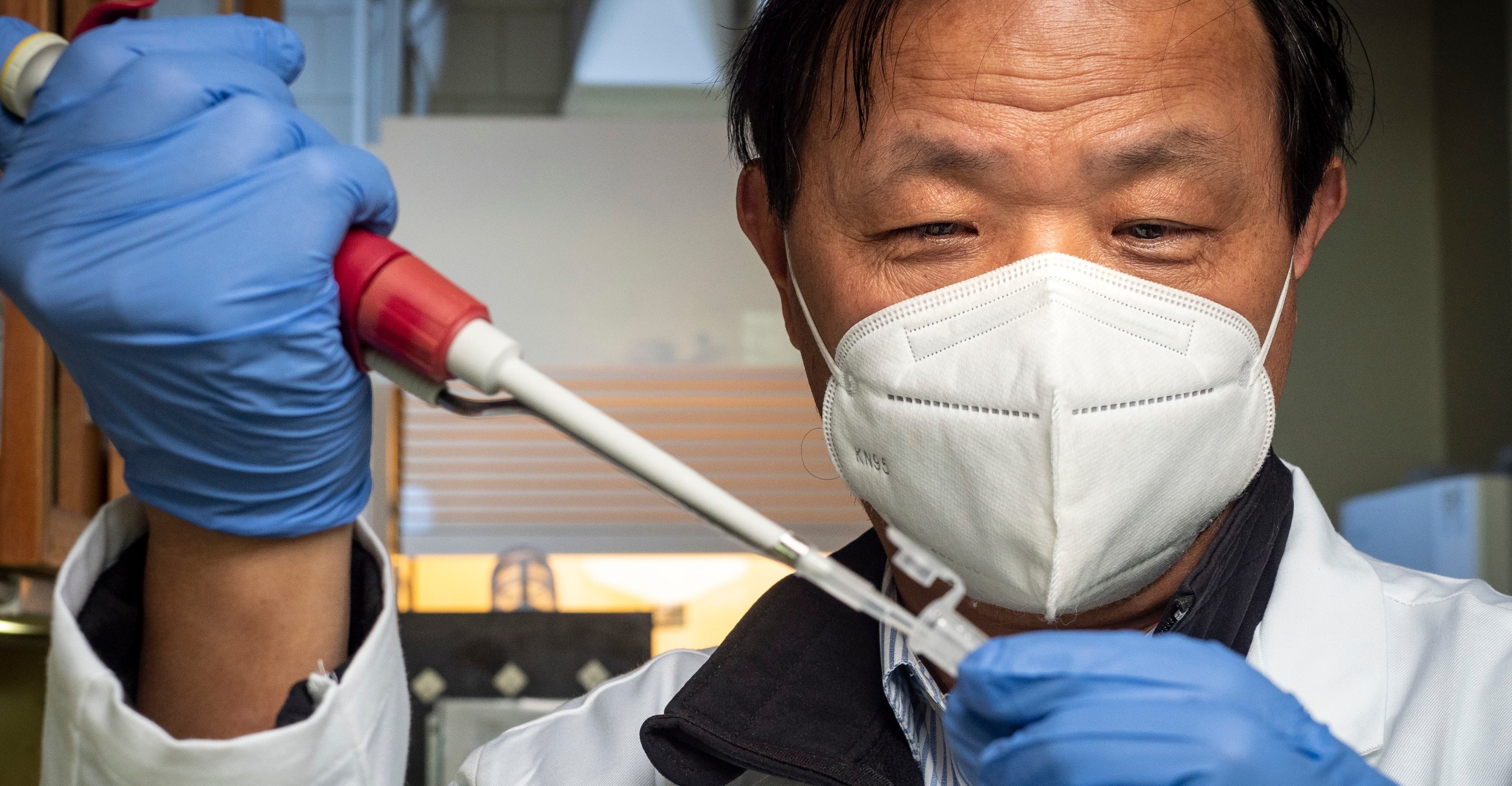
OSU scientists make wheat gene discovery
Thursday, April 29, 2021
Media Contact: Alisa Boswell-Gore | Communications Coordinator, OSU Ag Research | 405-744-3737 | alisa.gore@okstate.edu
A gene discovery in a wheat variety developed at Oklahoma State University could mean larger yields for Oklahoma wheat producers, researchers said.
After more than a decade of research, Liuling Yan, the Dillon and Lois Hodges professor of wheat molecular genetics and breeding in OSU’s Department of Plant and Soil Sciences, has discovered and cloned the TaOGT1 gene in the popular Billings wheat variety.
The full study on this topic is available online at nature.com. It was recently highlighted by the editors at the online magazine, Nature Communications.
“Imagine spending 10 long years looking for one final piece to a puzzle, but in this case, the puzzle is made from genes in wheat,” said Brett Carver, regents professor and holder of the Wheat Genetics Chair in Agriculture.
This newly discovered missing link will enable wheat researchers to fine-tune crop maturity for a specific use: cattle grazing, grain-only or short-season wheat. Carver said without this fourth genetic piece, the other three pieces were not clear.
“Dr. Yan has spent almost all of his OSU career discovering several genes, which govern the timing of grain development in winter wheat. We call this a maturity pattern,” Carver said. “The first three genes were major discoveries in their own right, but we were missing one critical piece to the genetic puzzle.”
Dual-purpose wheat is both grazed by cattle and harvested for grain. It is unique to the Southern Great Plains and planted earlier than grain-only wheat. More than 4 million acres of wheat is grown by Oklahoma farmers each year, and 40% to 60% of those acres are dual-purpose wheat.
A significant challenge for producers with dual-purpose wheat is deciding when to remove cattle from a wheat pasture, according to Amanda de Oliveira Silva, OSU Extension small grains specialist.
OSU researchers discovered in the 1990s that the optimal stage for removing cattle from a wheat pasture is prior to first hollow stem. This refers to the stage of a wheat plant when 5/8 of an inch of a hollow stem has developed beneath the grain head. At that point, the plant has reached its initial stage of reproductive development of wheat.
Other studies conducted in the early 1990s showed that grazing past first hollow stem decreased grain yield for producers. However, it is difficult for producers to use weather data to accurately predict when first hollow stem will occur, so the most reliable method of determination is to manually check plants in every field and to check them often. Silva also said the TaOGT1 gene is one of several genes which control the transition of a wheat plant from its vegetative state to its reproductive growth stage.
Billings is a great grain-only wheat, but it is not a good dual-purpose wheat, while Duster set the standard for dual-purpose adaptation. When the gene was taken from the Billings wheat plant during the study conducted by the OSU Wheat Improvement Team (WIT) and placed into the Duster plant, the transformed Duster wheat transitioned to reproductive growth stages and flowering earlier, just like the Billings wheat plant.
According to Yan, it was the cloning process itself that allowed his team to discover the new gene. Before cloning, no one knew this genetic mechanism of flowering control existed in wheat or that similar genes can have the same function in any plant species.
“We were surprised, because we found a gene that we had no idea how it worked in winter wheat,” Yan said. “In the beginning, we didn’t know what gene controlled the timing for the flowering process. Finally, we found that it is a gene encoding an enzyme involved in sugar and protein synthesis.”
The reason the discovery of the gene is exciting is because screening experimental lines for earliness of first hollow stem is a time-consuming process with heavy labor involved, Silva said. This discovery will allow researchers to use gene marker-assisted selection technology to identify whether experimental wheat lines will reach first hollow stem earlier or later without growing them in the field.
“It will make a big difference for producers, because it will result in our Wheat Improvement Team releasing varieties that are better adapted to their production systems,” Silva said.
“We need all four genes to make these predictions and to breed varieties for adaptation to a specific management system, including the dual-purpose system,” Carver added. “This new gene may have completed the package to do just that. We still need to do the validation work, but we are much closer now to the complete package than we were without TaOGT1.”
According to Carver, other research currently being conducted by WIT is focused on developing short-season wheat varieties that can be planted much later than usual — November and December — but still be harvested at the usual time in June.
“Yan’s four-piece genetic puzzle allows us to more effectively design those varieties based on genetic code rather than to rely on sheer luck,” he said.
According to Yan, the project was the combined effort of WIT and young scientists, including visiting doctoral student Min Fan and Haiyan Jia of Nanjing Agricultural University in China. The project was also supported by multiple agencies, including the U.S. Department of Agriculture’s National Institute of Food and Agriculture, the National Science Foundation, the Oklahoma Center for Advanced Science and Technology, the Oklahoma Wheat Research Foundation and the Oklahoma Agricultural Experiment Station.
